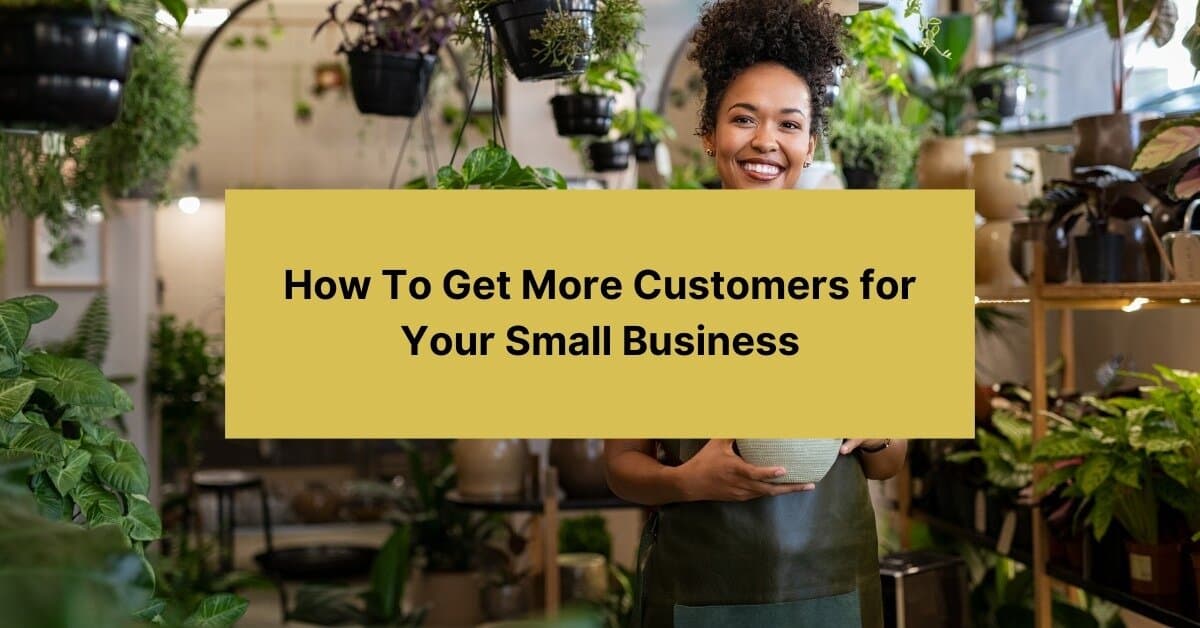If you’ve ever felt like you’ve done everything right. Built a beautiful website, created social media pages, printed business cards, and still can’t seem to get more clients, you’re not alone.
This Reddit post from a small business owner in Los Angeles really stuck with me. He started a window cleaning business, purchased all the necessary equipment, launched a website, set up Yelp and Google profiles, and distributed door hangers. He even saw a bit of traction through referrals and a free trial of Yelp ads. But when leads started to dry up, he didn’t know what to do next.
I see this kind of story all the time, especially from service-based business owners. If that’s you, here’s what I’d recommend to help:
1. A great website is not enough
Having a website is a great first step, but it’s not a lead machine on its own. Many business owners stop here, thinking that a clean homepage and a contact form are all it takes. The truth? Without traffic, your site is just a digital brochure.
Start by making sure your website is optimized for local search. That means connecting it to your Google Business Profile, using keywords your clients are searching for, and including clear calls to action like “Book a Free Consultation” or “Request a Quote.”
If you’re not creating helpful content (like blogs or FAQs) or guiding visitors to take the next step, you’re leaving leads on the table.
Also Read: How to Generate Leads on Autopilot in 2025
2. Not everyone is your ideal client
When you’re starting out, it’s easy to want to market to everyone. But the sooner you get clear on who you serve best, the better your results will be.
Take a moment and ask yourself:
- Who actually needs your service?
- Who is willing and ready to pay for it?
- Who do you enjoy working with?
For example, if you’re a general contractor, you might specialize in full-home renovations rather than quick repair jobs. If you’re a coach, maybe you thrive with high-achieving professionals, not first-time entrepreneurs.
Knowing your niche lets you focus your marketing, filter out leads that aren’t suitable, and attract more of the right people.
3. Tap Into Your Warm Network
It sounds simple, but many small business owners overlook the easiest place to find clients: their own network.
Reach out to friends, past coworkers, local businesses, or past clients and let them know you’re accepting new clients. Even a short, personal message on Instagram or LinkedIn can lead to a referral.
Want to go a step further? Offer a referral incentive or a limited-time bonus for anyone who sends someone your way.
And yes, doing a few free or discounted projects can help jumpstart your word-of-mouth marketing, but I only recommend it if it makes sense for your stage of business. If this is going to add more expenses than you can afford, this is not a good option. The goal is to turn those early jobs into testimonials and referrals that bring you paying clients fast.
If you’re only showing up to sell, your audience will eventually tune out. Instead, show up with value.
Here’s what that might look like:
- A YouTube video on “5 Things to Ask Before Hiring a Contractor”
- A blog post breaking down “The Top 3 Mistakes New Therapists Make with Their Website”
- A quick Instagram Reel with before-and-after shots of a recent project
- A Facebook post answering a common client question in your industry
The best kind of content answers real questions your clients are already asking. It doesn’t have to be fancy. It just has to be helpful. When you show up consistently and generously, leads will start finding you.
5. Don’t overlook community platforms like Reddit
Reddit, Facebook groups, and even your own Instagram comments are places where your ideal clients are asking for help every day. But most service providers miss these opportunities because they’re too focused on broadcasting instead of connecting.
Spend a few minutes a week searching for threads or posts in your niche. Answer questions. Offer real help. Share your perspective without pushing your services. You’d be surprised how many leads start with “Hey, I saw your comment and I think you might be able to help me…”
These platforms are also great for content ideas. The questions people ask can inspire your next blog post, video, or opt-in freebie.
6. Focus on reviews and referrals
Most people choose service providers based on trust. If you’re not actively collecting and sharing social proof, you’re missing out on leads.
Send a follow-up email after each job asking for a Google review. Share your favorite testimonial on your homepage or services page. Create a simple referral program and let past clients know about it. Even better if you can automate the process so it’s happening without you having to remember it.
Check out my Top recommended CRM that helps you to automate this process.
The truth of it is, people buy from people. And happy clients are your best sales team.
Final thoughts on how to get more clients
If you’re a small business owner struggling to get leads, you’re not alone, and you’re not stuck. The steps I’ve shared here don’t require a big ad budget or a massive team. They just require consistency, intention, and a willingness to show up. Organic lead generation may take time, but it builds a stronger, more sustainable business in the long run.
Need help figuring out what to do first? That’s where I come in. You can book a free discovery call, and let’s map out your next steps together.
Frequently Asked Questions
How do I get more clients for my service-based business without paying for ads?
Start by optimizing your website for local search, engaging your warm network, posting value-based content on social media, and participating in community platforms like Reddit or Facebook groups where your clients hang out.
What’s the easiest way to get referrals if I’m just starting out?
Do great work for a few early clients, whether that’s paid or free, and then ask for reviews and referrals. Offer a simple incentive, like a discount or small gift card, for anyone who sends someone your way.
How long does it take to see results from organic lead generation?
It varies based on your niche, effort, and consistency, but many small businesses start seeing results within 30 to 90 days when they commit to showing up consistently online and building relationships. Of course, that is just an estimate.


Jody-Ann Rowe
Jody-Ann Rowe is a marketing strategist helping service-based small businesses generate leads and grow online without relying on paid ads.


